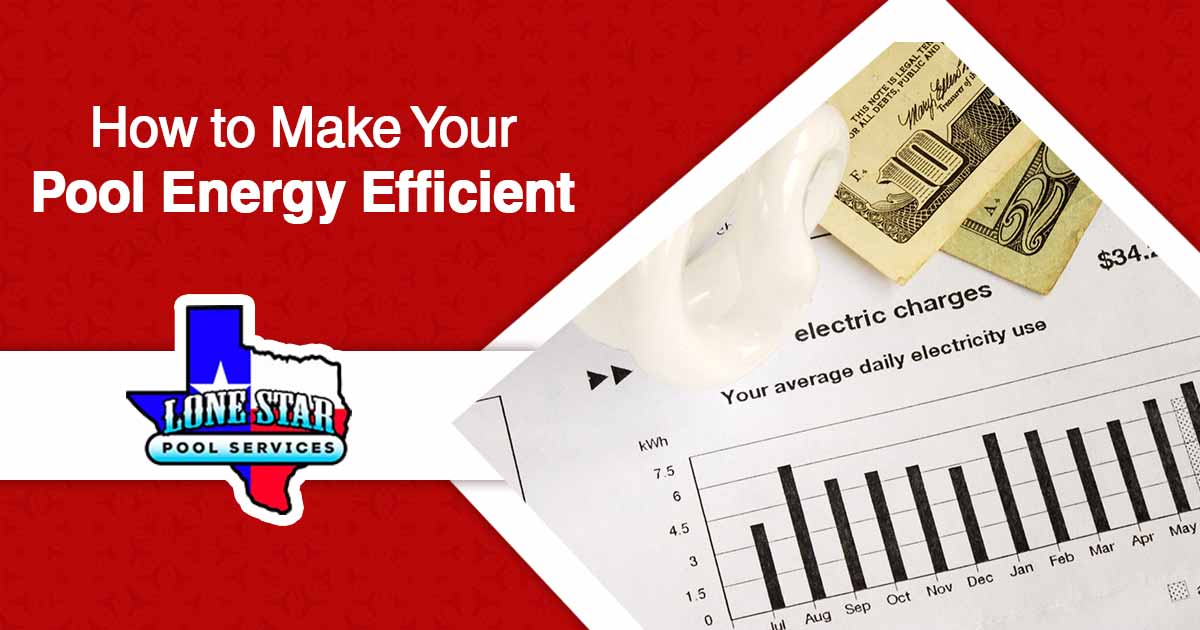Owning a swimming pool can be enjoyable, but it also comes with ongoing energy costs. From heating the water to running pumps, filters, and lighting, pool systems can quickly increase utility bills if they are not optimized for efficiency. By making a pool more energy efficient, homeowners can reduce monthly expenses, extend the lifespan of equipment, and lower their environmental impact. With the right upgrades and maintenance practices, a pool can operate smoothly while using significantly less energy.
Why Pool Energy Efficiency Matters
Energy efficiency in swimming pools is not only about saving money—it is also about sustainability and long-term value. Pools that rely on older, outdated systems often use more energy than necessary, leading to higher operating costs. Over time, this can place additional strain on pumps, heaters, and filtration systems, causing them to wear out sooner.
An energy-efficient pool offers three major benefits:
- Lower operating costs – Reduced energy use leads to immediate savings on monthly bills.
- Environmental responsibility – Using less energy helps minimize a household’s carbon footprint.
- Improved equipment performance – When systems are optimized, pumps and filters run more effectively and last longer.
For pool owners who want to balance comfort with cost savings, investing in energy efficiency provides lasting results.
Choose the Right Pool Finish for Better Heat Retention
One of the simplest ways to create an energy efficient pool is by selecting the right finish. A darker pool finish absorbs more sunlight, which naturally warms the water. This passive heating method reduces the need for gas or electric pool heaters, lowering overall energy consumption.
For homeowners in sunny climates, a darker finish can provide noticeable savings. By taking advantage of solar heat absorption, the pool stays warmer for longer periods without extra energy use. While the initial cost of resurfacing may be higher, the long-term benefits often outweigh the expense.
When considering a new pool finish, pool owners should:
- Look for materials designed for durability and heat absorption.
- Consider shade patterns in the backyard to maximize solar benefits.
- Combine the finish with other efficiency upgrades for greater savings.
Choosing the right finish is a long-term investment that enhances both comfort and efficiency.
Install an Automatic Pool Cover to Reduce Energy Loss
Evaporation is one of the main causes of heat and water loss in swimming pools. An automatic pool cover helps reduce this problem by trapping heat inside the pool and minimizing evaporation. By keeping the water covered when not in use, pool owners can maintain a consistent temperature and reduce the workload on pool heaters.
In addition to energy savings, automatic pool covers provide other advantages. They improve safety by acting as a barrier when the pool is not in use, and they also help keep debris out of the water, reducing the need for frequent cleaning. Compared to windbreaks or other temporary barriers, an automatic cover is more effective at preventing heat loss.
Key benefits of installing an automatic pool cover include:
- Lower heating costs through reduced heat loss
- Less water evaporation, conserving both energy and resources
- Added safety and cleanliness for everyday pool use
By incorporating an automatic cover, homeowners take a major step toward maintaining an energy-efficient pool.
Optimize Filtration with Larger Pool Filters
The pool’s filtration system plays an important role in overall energy use. Smaller filters require pumps to work harder, pushing water through at higher pressure. This added strain increases electricity consumption and shortens the lifespan of the pump. By switching to larger pool filters, the system operates more efficiently because water flows through with less resistance.
A larger filter not only reduces energy use but also improves water quality. Since the system can process more water at a slower pace, it captures debris more effectively and requires fewer run cycles. This means the pump does not have to operate as frequently, further lowering utility costs.
The main advantages of using larger pool filters include:
- Reduced strain on the pump, leading to longer equipment life
- Lower energy costs due to improved water flow efficiency
- Cleaner, clearer water with fewer filtration cycles
Upgrading to a larger filter is a practical step toward building an energy efficient pool and extending the performance of existing equipment.
Switch to LED Pool Lighting for Energy Savings
Lighting is another area where pool owners can significantly reduce energy consumption. Traditional incandescent bulbs use large amounts of electricity and burn out quickly, leading to higher replacement costs. By switching to LED pool lighting, homeowners can cut energy use by up to 80% while also extending the lifespan of their lighting system.
LED lights are designed to last several times longer than incandescent bulbs, making them a cost-effective upgrade. They also offer a variety of color options and brightness levels, allowing pool owners to create a customized atmosphere without sacrificing efficiency.
Benefits of LED pool lighting include:
- Substantial energy savings compared to traditional bulbs
- Longer lifespan, reducing replacement and maintenance costs
- Improved lighting quality and customizable settings for ambiance
Making the switch to LED technology is a simple and affordable step that supports an energy-efficient pool while enhancing the overall poolside experience.
Upgrade to Energy Efficient Pool Equipment
Outdated pool equipment often consumes more power than necessary, making it one of the biggest obstacles to achieving an energy efficient pool. Over time, pumps, heaters, and filters lose efficiency, causing them to work harder and drive up utility costs. Replacing older systems with modern, energy-saving alternatives helps reduce operating expenses while improving overall performance.
One of the most effective upgrades is a variable-speed pool pump. Unlike single-speed pumps that run at full capacity at all times, variable-speed models allow homeowners to adjust the flow rate to match the pool’s needs. This flexibility significantly lowers electricity use and extends pump life.
Other upgrades worth considering include:
- High-efficiency pool heaters – Designed to heat water faster while using less energy
- Automation systems – Smart controls that optimize pump, heater, and lighting schedules
- Energy-efficient filtration systems – Reduce circulation time without compromising water quality
Upgrading to the best pool equipment may require an initial investment, but the long-term energy savings and improved system performance make it a worthwhile decision for pool owners.
Additional Tips for an Energy Efficient Pool
Beyond equipment upgrades, small adjustments in daily pool care can make a noticeable difference in energy use. Regular maintenance ensures that all systems run efficiently and prevents equipment from working harder than necessary. Clean filters, balanced water chemistry, and routine inspections reduce strain on pumps and heaters, lowering overall energy demand.
Another effective strategy is seasonal pool inspections. Identifying minor issues early helps avoid costly repairs and prevents inefficient energy use caused by failing components. For example, a leaking seal or clogged filter can increase pump workload, driving up electricity costs over time.
Landscaping can also support pool energy efficiency. Planting shade trees or installing windbreaks around the pool area helps regulate water temperature and reduces evaporation. These natural solutions work best when combined with other upgrades, creating a more sustainable pool environment.
By applying these practices, homeowners can maximize the performance of their existing systems and ensure their pool remains energy efficient throughout the year.
Professional Pool Energy Efficiency Inspections
For pool owners who are unsure where to begin, scheduling a professional inspection is a practical first step. A pool inspection identifies which systems are outdated, underperforming, or consuming excess energy. This evaluation provides clear guidance on which upgrades will deliver the most cost savings and efficiency improvements.
During an inspection, a pool professional may review:
- The efficiency of pumps, heaters, and filtration systems
- Signs of wear or damage that may impact performance
- Opportunities to replace equipment with energy-efficient alternatives
By understanding the current condition of their pool, homeowners can make informed decisions about upgrades and long-term maintenance plans. Addressing issues early not only reduces energy costs but also extends the life of essential pool equipment.
A professional inspection ensures that every step taken toward an energy efficient pool is strategic, cost-effective, and tailored to the homeowner’s needs.
Call Lone Star Pool Services Today
Creating an energy efficient pool requires the right upgrades, routine maintenance, and expert guidance. Lone Star Pool Services provides professional inspections, equipment upgrades, and pool maintenance designed to lower energy costs and improve system performance. Serving Houston, Katy, Copperfield, Cypress, Tomball, and surrounding areas, the team helps homeowners achieve lasting efficiency and savings.
Call (832) 928-3017 today to schedule a free estimate and start making your pool more energy efficient.

